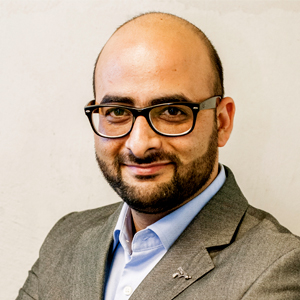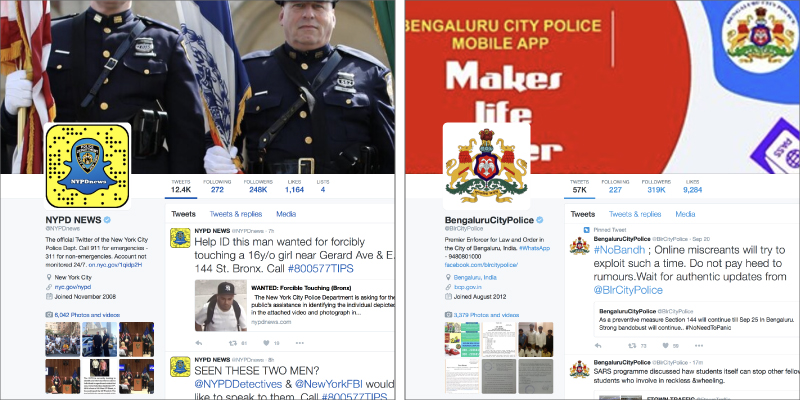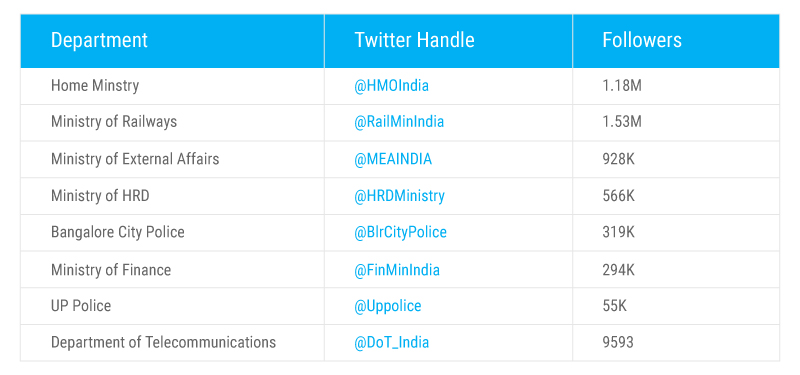Raheel Khursheed is full of beans. We are meeting him in a cafe in Khan Market, Lutyens Delhi’s fashionable high street hangout, and it isn’t just the black coffee that has the Twitter India head of news, politics and government all excited.
He is telling us about TwitterSeva, a one-year-old service on the microblogging platform aimed at citizen services. The premise of TwitterSeva is simple: tweet with the handle of a government department — say, Indian Railways or your local traffic police — and get your complaint addressed almost instantly.
To be sure, the average citizen could tweet to (or troll) these handles even earlier and hope to get her voice heard but TwitterSeva gives the public utilities the power to work on them like a finely-tuned and automated customer relationship management (CRM) system. It’s not there yet but imagine the 22 million passengers who travel by Indian railways daily having their complaints addressed directly — from stinking loos to pantry car attendants who charge more than what they should to a corrupt ticket checker.

For operations staff, who mostly live by widely hated “chalta hai” cred, TwitterSeva has been a bolt from the blue. “At the ground level everyone hates us. Are you kidding me? Of course! It’s like there is this app on the phone and we’ve made your life hell. Everyone is like what the hell is this,” says Khursheed, 33, when asked if Twitter India has faced resistance on ground, while working with ministries and state police.
TwitterSeva, which started off this February with the Bengaluru Police, has the Indian Railways, Ministry of Commerce and Industry, Ministry of Communications, Ministry of External Affairs, and the Uttar Pradesh Police using the platform. It counts about half a million tweets a month and is set to grow exponentially as more citizen services come on the TwitterSeva platform.
#Workflowin140characters
How exactly does TwitterSeva work?
It’s a dashboard that Twitter India developed with the help of NCR-based Opalina Technologies, which authorities can use to automatically track Twitter mentions, raise tickets, and ensure swift action and resolution of issues or complaints raised by citizens.
Picture this. You’re stuck at Bengaluru’s MG Road in a traffic jam for a long time. You tweet to the Bengaluru Police handle about it. The tweet shows up on the TwitterSeva dashboard on one of the computers at the social media wing at the command centre in the city commissioner’s office on Infantry Road. The person manning it assigns a priority to it and raises a ticket, while assigning duty to the relevant officer, who then is pressed into action.
There is some automation built into the workflow to reduce the load on humans. Over 200 keywords such as law, order, and traffic, are keyed into the TwitterSeva dashboard that the Bengaluru Police uses. So even if the tweet is not tagged properly, it will still show up on the dashboard.

It was an early partnership between the Bengaluru Police and Twitter India in 2014 that led to the seeds of TwitterSeva being sown.
“The system on the basis of which Seva is built is the offline analog system we built with Bengaluru Police. This manual system where they had excel sheets and they would track mentions manually and then they would assign those mentions to the relevant officers. Because how the system should work, the workflow, that’s where we came up with,” Khursheed says.
Khursheed first met the then Bengaluru Police Commissioner MN Reddi in August 2014. Using his understanding and knowledge of the police hierarchy and of the overall working of the system from his days as a TV reporter who covered crime, Khursheed pitched to the commissioner the idea of engaging Twitter as a tool for better policing. “Thankfully, Reddi completely got it and he over invested.”
But there were obstacles and failures on the way; still are.
Initially, Khursheed was faced with resistance and rejection. Before Bengaluru Police, Twitter India had approached Delhi Police and Mumbai Police, and there was “zero response”. “They hate the internet, they hate it with passion. They think everything that’s wrong with the world, the internet has enabled it. You have no idea the number of meetings I’ve had where I’ve had to remind people that there were riots before, like the partition happened pre-internet,” he chuckles talking about some of the early meetings he had.
But once the Bengaluru policing project took off, the others saw the merit in the project and approached Twitter — Mumbai, Delhi, Telangana.
Ahead of @NYPDnews

Interestingly, Bengaluru Police’s Twitter handle has more followers than the NYPD (New York Police Department), considered one of the best and the most efficient police forces in the world. While @NYPDnews has around 250K followers, @BlrCityPolice has around 320K followers!
Three shifts, over a 24-hour cycle, with four constables on each shift, each armed with a desktop: that’s how Bengaluru Police tackles an average of 500 tweets a day. On regular days, most tweets are about traffic. However, during the recent Cauvery protests and riots in the city, nearly 1,500 tweets poured in daily.
“We needed to get into social media because it was the most transparent. We wanted to bypass [print and broadcast] media. There was no way for us to connect to the public directly. We wanted to avoid all the confusion that comes in the way,” says Abhishek Goyal, DCP traffic, Bengaluru, an IIT-Delhi alumnus.
Earlier this month, Uttar Pradesh Police, which is the world’s largest police force adopted TwitterSeva — the second to do so after Bengaluru. UP is the country’s most populous state and with the state police serving more than 200 million people.
Twitter is providing the product and training free of cost to Indian authorities. Khursheed says the company hasn’t made “much investment” for developing the product, nor has it thought of monetising it yet. Although, he agrees that money can be made from the platform, especially if it extends to the private sector, “but those discussions haven’t happened yet”.
Toot toot! Tweet tweet!
Indian Railways carries nearly 8.4 billion passengers a year. With that number as perspective, the number handled by the railways TwitterSeva service is small: 7,000 to 8,000 tweets daily. About 10% of these are complaints. Just like the Bengaluru Police, they too work in shifts round the clock at the Rail Bhavan, the headquarters of the railways in central Delhi.
Sayan Acharya, a Delhi resident, whose preferred mode of travel is train, and frequently travels to the eastern part of the country in either a Rajdhani or Duronto, speaks of two instances where his grievance was resolved in under 15 mins after tweeting about it.
“I was on a train to Kolkata, and the air-conditioning in the coach wasn’t working properly. When repeated requests to the train staff fell on deaf ears, I tweeted about it tagging the railway handle and the minister. Within minutes, I had people in the coach working to fix the problem. And they even checked if I was satisfied with the outcome,” says Acharya, who works with a Delhi NGO.
Another time, Acharya was travelling on the Bhubaneshwar-Kolkata route when the toilets were “really dirty”, he tweeted and voila! Within minutes the staff swung into action and the problem was resolved.
The response time of @RailMinIndia to all Twitter compliants is less than 8 minutes. Power of #TwitterSeva!! https://t.co/r5vFMpfPWi
— Raheel Khursheed (@Raheelk) September 8, 2016
Khursheed tells us there have even been instances where TwitterSeva has helped make timely intervention in cases of sexual harassment on trains. He cites an incident of a woman being harassed; she messaged her brother, who in turn tweeted about it, and in under eight minutes, the perpetrators were picked up.
TwitterSeva is getting Khursheed some fandom in Twitter worldwide. Impressed by the success of the Bengaluru Police project, Twitter Indonesia sent in two executives to study it and watch the UP Police TwitterSeva launch. The Java City Police there is keen to adopt the India-built system, Khursheed says. There has been interest from Dubai police and other jurisdictions in the Middle-East as well.
The genesis of the TwitterSeva idea, he says, came as a need he felt to move away from vanity in social media. “One challenge that we sought out to solve (with Twitter Seva) was to fundamentally answer this existentialist question that if all the chief ministers are on the platform, all the union ministers are on the platform, the prime minister, then we have all the cabinet ministers, the union ministers on the platform, what does that mean for us, what does that mean for Twitter as a platform.”
He lists direct interaction, transparency, and accountability as the key features of TwitterSeva. Last month, the Ministry of Commerce and Industry resolved 785 of the 800 tickets raised via the platform, says Khursheed. Transparency ensures there are no middlemen, no bribes, if you are having issues getting a licence for your business, you tweet directly to the ministry or the minister, says Khursheed.
Are there rogue tweets or fake complaints? Khursheed says the number is negligible. “Less than a per cent.”
New SLAs in public service?
While a large number of political signups onto the platform may be to attract citizen followers, it is also a way to ensure transparency. “Through this project we are trying steer from vanity metrics to impact metrics,” remarks Khursheed.
The next round of rollout will see Mygov, Ministry of Health, Ministry of Home Affairs, the Goa government, the Mumbai and Delhi Police adopt TwitterSeva.

“As we roll out this product out, as we see people use it, these are aspects that are becoming very clear to us that this is what the product can do for us…people who are hesitant would join, strengthen live government narrative. A range of Indians are getting their voices heard almost instantly,” Khursheed signs off.
To be sure, TwitterSeva is not the e-governance silver bullet that a country of 1.2 billion people — less than a fourth of who are online and fewer on social media — needs. Sunil Abraham, a strident and critical watcher of all things at the intersection of technology and policy, says what India needs is a broader framework like what was envisioned in the Draft Electronic Delivery of Services, 2011 (EDS) — every department should provide services electronically, there should be service level agreements (SLAs) and standards, and there will be a penalty if the service is not delivered.
TwitterSeva will not lead to maturing of government systems and its underlying processes, says Abraham, the executive director of Bengaluru-based Centre for Centre for Internet and Society. “I like the approach . Enthusiastic government officers are leveraging social platforms. But, as a policy guy, I would have liked the EDS law. TwitterSeva is good but not good enough,” he says.
Still, it is a start. A start to open up public services to transparency and measure publicly the efficiency of service delivery. Oldtimers will recall how in the early 1990s, public sector banks in the country would display service standards on a white-on-blue board. A bank draft or pay order was to be given to the customer in 20 minutes, a cheque to be encashed in 10 minutes. That, in a small way, raised service level standards then. TwitterSeva seems set to more on a wider public service canvas.
Edited by Josey Puliyenthuruthel
Lead image: Nikhil Raj P
Updated at 4 pm on Sep 22 to add this line: “There has been interest from Dubai police and other jurisdictions in the Middle-East as well.”
Subscribe to FactorDaily
Our daily brief keeps thousands of readers ahead of the curve. More signals, less noise.








